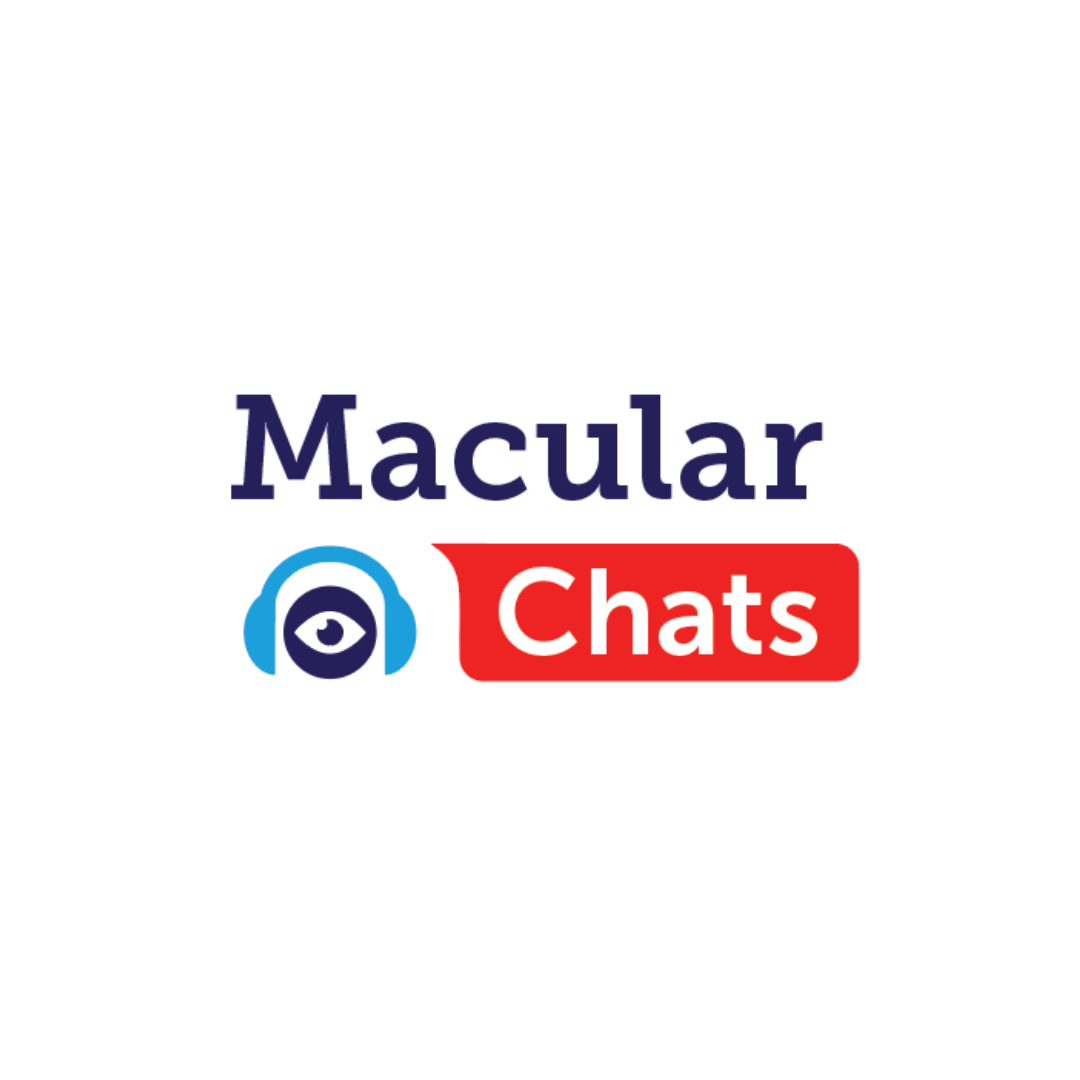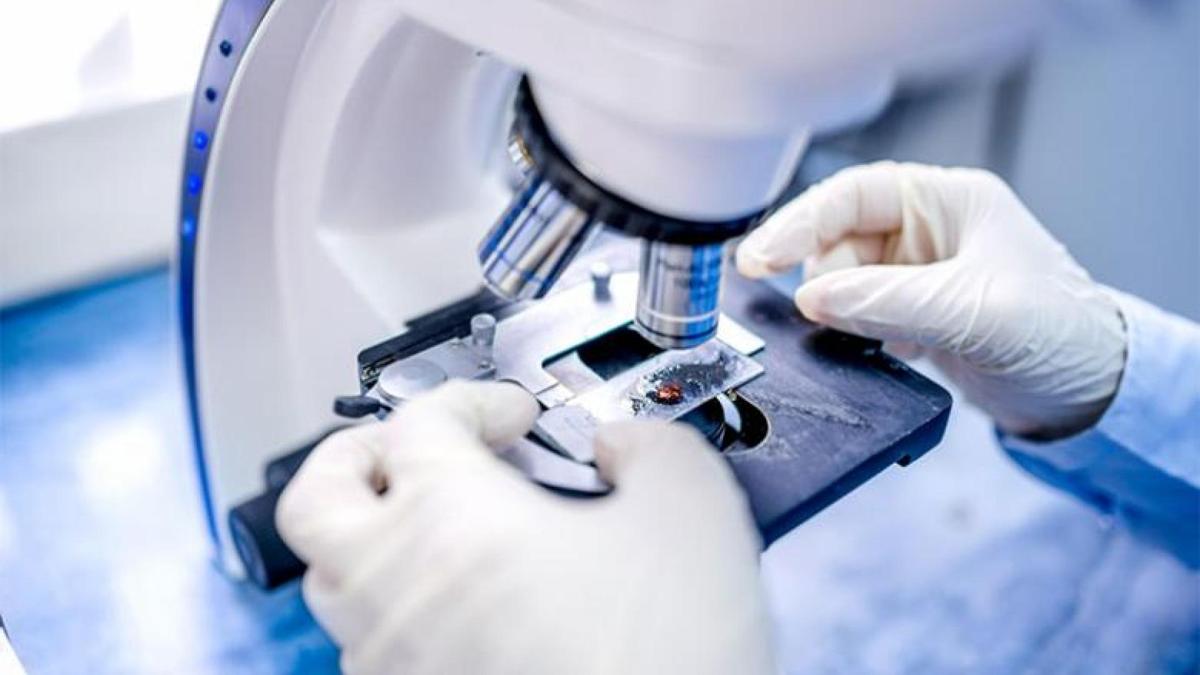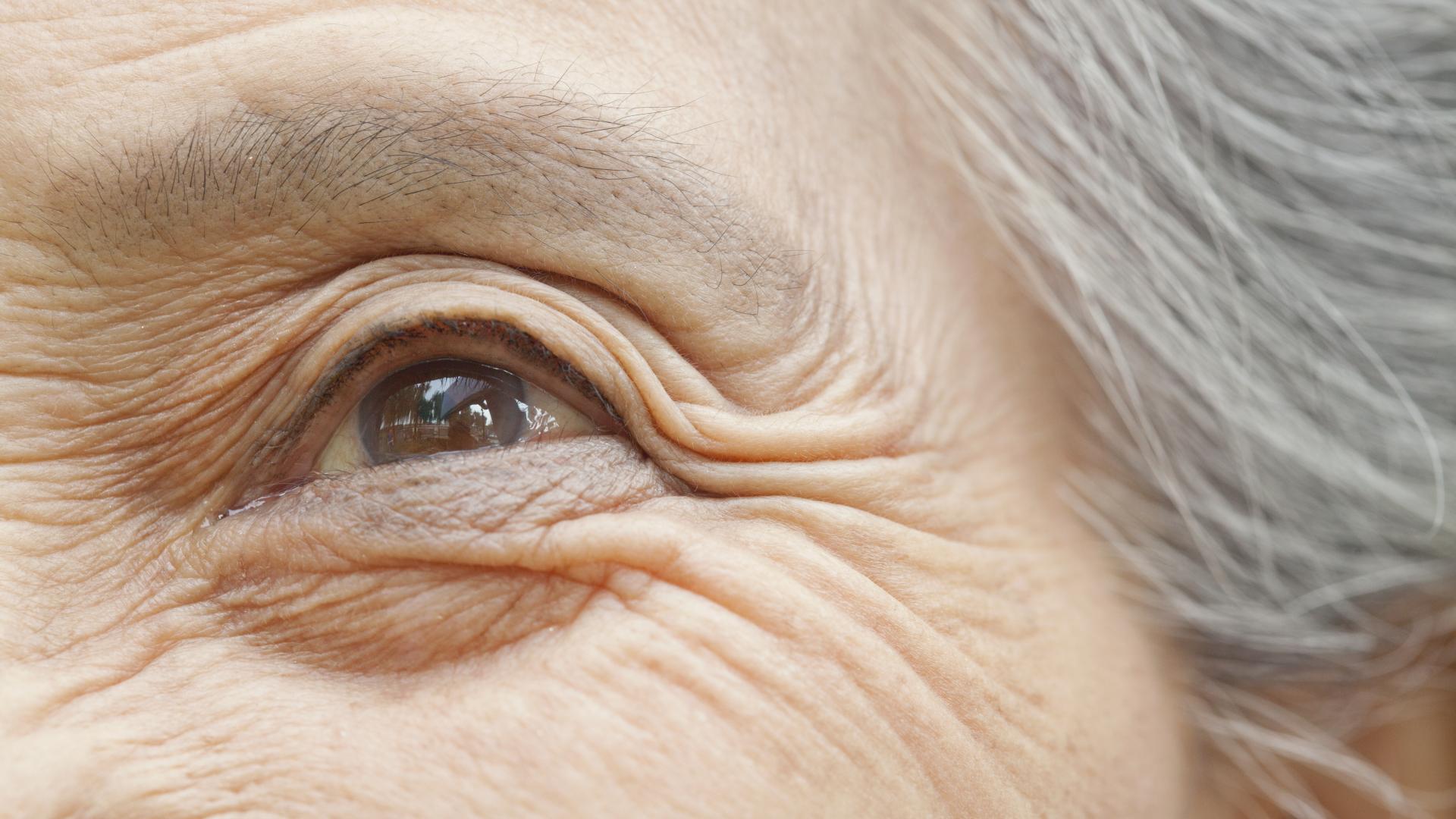Adult Stem Cells as a Treatment Target for AMD
Featuring
Sally Temple, PhD, and Jeffrey Stern, MD, PhD
Co-founders of The Neural Stem Cell Institute


Sally Temple, PhD, and Jeffrey Stern, MD, PhD
Co-founders of The Neural Stem Cell Institute



This event featured Dr. Sally Temple and Dr. Jeffrey Stern who are both co-discoverers of stem cells in the human retinal pigment epithelium at the Neural Stem Cell Institute, who addressed the role of stem cells in central nervous system development, maintenance, and repair.
There was also discussion about cell transplants to replace retinal pigment epithelium (RPE) and clinical trials for stem cell therapy and AMD.
MS. DIANA CAMPBELL: Hello and welcome to this month’s BrightFocus Chat about macular degeneration. My name is Diana Campbell, and I’m pleased to be here today with the community of people that are impacted by macular degeneration. The topic of today’s Chat is “Adult Stem Cells as a Treatment Target for AMD,” or for macular degeneration. We are proud to host our first-ever Chat about this topic with two phenomenal guests. We’re going to spend about a half hour learning the ways that stem cell therapies can provide hope for treatments in the future. For those of you who are new to our Chat series, this Chat is brought to you today by BrightFocus Foundation. We fund some of the top scientists in the world, including our guests today, who are working to find better treatments and, ultimately, cures for macular degeneration, glaucoma, and Alzheimer’s disease, and we do events like today’s Chat to get the latest news from science as quickly as possible to families who are impacted by these diseases. You can find much more information on our website, www.BrightFocus.org. We are delighted to host today’s guests, Dr. Sally Temple and Dr. Jeffrey Stern, who co-discovered stem cells in the human retinal pigment epithelium, or the RPE. As founders of the Neural Stem Cell Institute, and through their research programs, they seek to understand the role of stem cells in the central nervous system: development, maintenance, and repair. Working together, they are helping to develop to a stem cell-based therapy for age-related macular degeneration, or AMD, which is currently in a clinical trial. Sally and Jeff, thanks so much for joining us today.
DR. JEFFREY STERN: Thank you.
DR. SALLY TEMPLE: Yeah. Delighted to be here.
MS. DIANA CAMPBELL: We’re delighted to have you. And since you’re speaking, Sally, I’d love to start with you with a somewhat basic question. What is a stem cell?
DR. SALLY TEMPLE: Oh, that is a great starting question, and stem cells are pretty amazing cells. You can think of them as a renewable resource in the body. What a stem cell can do from a biological point of view is they can make more copies of themselves. So, they can sustain themselves, and at the same time, they can make the types of cells that we need in the body. So, a good example is a skin cell. You know, when you cut your skin, that damage can be repaired, and it’s repaired, in part, because of stem cells that exist in the skin, and they’re there to do that job. So, they’re really remarkable cells and very important for health.
MS. DIANA CAMPBELL: Absolutely. It sounds like it. And with what you just said in mind, what is an adult stem cell?
DR. SALLY TEMPLE: Yeah, so, stem cells are actually present throughout life. They’re important for making the tissues in the body. But some of the tissues in our body actually suffer wear and tear—like the skin example that I just said or blood itself—and so those tissues are replenished throughout life by stem cells. So, we actually have stem cells in our body now: in the skin; in the bone marrow making new blood cells; in the cornea, also, making and refreshing the corneal cells. And we discovered that there was a stem cell in the retina—in the retina pigment epithelium—and it’s present in adults throughout life. We’ve even found them in 99-year-old donors. So, fortunately, they’re there throughout life into adulthood, so we can easily work with them.
MS. DIANA CAMPBELL: That’s really interesting and encouraging. Can we talk a little bit more about that RPE cell, more specifically, the retinal pigment epithelium cells just to give a little more context for our listeners?
DR. SALLY TEMPLE: Yes. The retinal pigment epithelium is the pigmented part of the retina. If you look in the center of someone’s eye you can see black right in the middle in the pupil. What you’re seeing is really the pigmented tissues at the back of the eye in the retina, and that’s the cell that degenerates in macular degeneration. It’s a cell that’s critically important to maintain the health of the retina to enable us to respond to light and see things, and so when that cell becomes dysfunctional and damaged, as it does in age-related macular degeneration, for example–AMD–we begin to lose vision or lose central vision. It’s really an essential cell for vision function.
MS. DIANA CAMPBELL: Yes, it definitely sounds like it. So, how do these RPE cells become other cells or other cell types?
DR. SALLY TEMPLE: So, within the RPE layer, we found that there is a stem cell existing there, and it’s really poised to make new RPE cells. So, it’s a stem cell that, once we plate it in tissue culture and we grow it in the laboratory, when the cell is placed in tissue culture, we can give it factors that make it divide, and then it naturally differentiates into retinal pigment epithelial cells. So, we can get many, many millions of cells from the starting stem cells.
MS. DIANA CAMPBELL: Wow. Jeff, let’s bring you in. What is the advantage of stem cell therapy for AMD treatment?
DR. JEFFREY STERN: Well, in building on the context that Sally established, our vision is mediated by photoreceptor cells in the retina, and the RPE is adjacent to the photoreceptor cells and supports them. So, that is RPE cells are lost in AMD; vision is lost. Atrophy, or loss of cells, is a hallmark of macular degeneration, and so drugs or vitamins that, maybe, can slow down the loss of those cells are a wonderful thing, but once the cells are lost, there’s really very little we can do to reanimate them. And so, AMD, due to the atrophy of the RP layer, is an ideal target for cell replacement therapy, which is a type of stem cell therapy where we create the cells that are lost and then replace them.
MS. DIANA CAMPBELL: Wow. At what stage of AMD does stem cells have to be administrated to work like this? And is it a one-time treatment?
DR. JEFFREY STERN: Well, we’re still in clinical trials, and so I have no definitive answer to both questions, but I can say right away that once RP cells are lost, this type of treatment should be effective. There’s no need to undergo the treatment unless vision is lost, and that tends to be a later stage of macular degeneration. As far as how many treatments would be required, the answer is also still uncertain. But some recent data from a related trial—clinical trial out of California—showed that the cells transplanted to replace the lost RPE are still present after 2 years with really very little loss—remarkably good duration of treatment. We consider the RPE replacement to be a one-time treatment, but we’re still uncertain if that’s the case.
MS. DIANA CAMPBELL: How amazing would a one-time treatment be? The prospect of that is just so exciting. Are there any risks associated with stem cell therapy?
DR. JEFFREY STERN: Yes. The major risk is for the implantation procedure itself. That carries the usual surgical risk of infection or bleeding or retinal detachment. Those risks are expected to be uncommon but still important to consider, particularly if we are transplanting into patients who still can see relatively well. The other major risk for stem cell treatment, in general, is that the cells can become other types of cells. Sally made it clear that the adult RP stem cells is committed to making RP progeny, but the risk that other cell types can arise needs to be considered, and careful studies have shown that risk to be vanishingly small.
MS. DIANA CAMPBELL: Gotcha. Can you tell us more about the ongoing clinical trial you mentioned for dry AMD?
DR. JEFFREY STERN: Sure. We’re still in the early phases. The trial is occurring at the University of Michigan Kellogg Eye Center. It’s a Phase 1/2a trial, which means that we’re trying to determine that the treatment is safe or not and to get a signal about how effective the treatment will be, rather than a definitive answer. The best place to learn about the criteria for joining this trial, should any of the listeners be interested, is at https://clinicaltrials.gov/. All of the criteria for entry and the tests that are run during the trial are listed there.
MS. DIANA CAMPBELL: Oh, that’s great to know. We can provide a link to that on the transcript. Just to clarify, you mentioned in the question before about surgical procedure. Is this a surgical procedure, or what’s the delivery method?
DR. JEFFREY STERN: In the laboratory we grow the RPE cells—the ones that are missing in the patient—and then we have to inject them underneath the macula to replace the cells that are lost. And so, that is an operating room procedure. It’s a short procedure. It’s a procedure that does not have as long a history as others because cell and gene therapies are new over the past decade or so, and many centers are now carrying forth a gene therapy that was recently approved. And so, the experience and the history with this procedure has been increasing over the past several years.
MS. DIANA CAMPBELL: Sure thing. Yeah, we’ve spoken to a few people doing gene therapy, and it’s certainly another interesting concept and angle. So, we know that this trial is for dry AMD, but aside from that, are there any other people who might be eligible for this trial?
DR. JEFFREY STERN: Well, the rules for the FDA approval of the trial are quite set at this early stage. We believe the treatment would be applicable to any disorder where RPE cells were lost, and there are many of those, but our focus right now is on macular degeneration—dry macular degeneration, I should add.
MS. DIANA CAMPBELL: Sure, of course. That makes complete sense. So, you mentioned you’re in Phase 1 and 2a; what is the project timeline for this treatment? So, how long does it take to get from the phase you’re currently in to Phase 3 approval and then, of course, the doctor’s office?
DR. JEFFREY STERN: We expect to complete the current phase over the next 1 to 2 years, at which time we’ll have a relatively strong concept of the safety of the trial and a sense of its efficacy. The next phase, 2b, will require another 2 years of work to strengthen our assessment of how effective this treatment is; and then stage 3 would require 2 or 3 more years. So, the total is about 5 years of clinical trial prior to introducing the treatment into a doctor’s office.
MS. DIANA CAMPBELL: Sure thing, and I think it’s always good to remind people just how long this process takes. It’s not unique to your trial whatsoever, obviously. So, this is something we’ll continue to watch, and if you have the close of different trials and outcomes to report, we’d be happy to share that on a Chat or with our audience in other ways.
DR. JEFFREY STERN: Thank you.
MS. DIANA CAMPBELL: So, for both of you, are there other cell-based therapies out there? And will this trial help pave the way for the field?
DR. JEFFREY STERN: Yes, and yes. The background that RPE cells are lost and need to be replaced for a treatment of as macular degeneration makes macular degeneration an ideal target for replacement therapy. And there are groups in Japan and throughout the U.S. and in the U.K. that are transplanting various kinds of stem cells. So, Sally mentioned that there are stem cells that make many different kinds of tissues, and some of those can be coaxed into making RPE-like cells. That’s a pluripotent stem cell approach. We use a suspension of cells to inject … simply inject under the macula, and a few of the pluripotent stem cell trials are also using a suspension approach. The other major effort for other kinds of stem cells for macular degeneration is to grow the RPE on a scaffold—on a platform—and then that scaffold is slipped under the macula with the hope that there’ll be more immediate and stable resolution of the RPE functions. We believe that the adult stem cell that we use because it has an improved safety profile—it’s already committed to making RPE cells rather than needing to be coaxed to do so—can be transplanted at an earlier stage of development. So, we are transplanting younger RPE cells. Even though they’re from adult, they are younger, and those younger cells, we all know in the skin or elsewhere, tend to be more reparative, and in our preclinical trial, we found that there’s an ideal stage of development—an ideal age, if you will, of the RPE—that’s more effective than older or less-mature RPE cells at rescuing vision. The cells are more active, and they engraft more, and that’s the angle, if you will, that we’re evaluating to learn if that benefit of the younger cells can be given to patients.
DR. SALLY TEMPLE: Yeah. This is really exciting in the field. As Jeff just mentioned, there are several other clinical trials going on for RPE replacement for macular degeneration, and I just wanted to mention that all of these studies that he is referring to, they are done under FDA allowance. They’re carefully reviewed. They have a lot of data supporting the trial before you can even commence, and that way, the patient’s safety is at the top—it’s the most important thing. And this is the case in the U.S., and of course, in other countries, there are also regulatory authorities that will make sure that the trials are done to a high standard and that the data is shared so that we really know what is going on. But I just wanted to give a warning because there has been a proliferation of these so-called stem cell clinics, and this is in the U.S. and around the world. And, unfortunately, the people who are running these clinics, they say things like, “Oh, we don’t need the FDA to watch over what we’re doing; we have a cure and a treatment for macular degeneration.” They charge people thousands of dollars, which should be a red flag. You’re not charged thousands of dollars if this is a proper clinical trial, and then what they do is unconscionable. They do things like liposuction on individuals and then inject those gemisch into the eye claiming that they’re stem cells. Unfortunately, several people have been blinded through this so-called treatment. And so, we really, really have to be cautious. And I just wanted to mention that the International Society for Stem Cell Research that really follows the guidelines very, very carefully, they have put out a website called “A Closer Look at Stem Cells,” so that if anyone is contemplating some type of stem cell trial, they can go there and they can read about the questions to ask; what might be red flags that would say, “Hey, this isn’t a legitimate place.” And, of course, you should be talking to your doctor, talking to your retina specialist, to make sure that what you’re going to embark on if you decide to do it that it really is an authorized and regulated and proper trial.
MS. DIANA CAMPBELL: Yeah, it’s just a terrifying and heartbreaking thought that there are these … I don’t know if it’s a scam or what to call it, but groups that are claiming to have treatments or cures and really just end up harming you. I’m really glad you shared that resource with us. We do have time to do a little Q&A, as we discussed. Sally, the first question I’ll give to you. It’s kind of related to what you just shared. We have a listener in Florida who is aware of adult stem cell drops from body redesigning. I’m wondering and guessing that these might be sort of the “not FDA-approved” approach that you described.
DR. SALLY TEMPLE: Well, yes. I mean, I have not looked into that specifically, but it does sound like it is, and in fact, it is Florida where some of these egregious efforts … I can’t call them clinics because that implies that they’re actually delivering treatments, but they claim to be clinics. And there have been news reports coming from clinics in Florida that have actually blinded people—people that could see and afterwards their eyesight was destroyed. Again, talk to your doctor, read about it, learn about the red flags. The red flags are things like, well, they’ll say they don’t need FDA oversight. Of course, they do if this is a real treatment. They will say that … or they’ll charge you maybe $5,000 for an injection. That reflects that it’s not a real clinical trial. And if they’re really doing the hard work, as we and others have done, there would be publications in high-quality journals that the physicians can refer to—your physicians can refer to—to make sure that what you might be doing is really protected. So, absolutely, be very, very careful of these scammers. You used the right word.
DR. JEFFREY STERN: Well, to build on Sally’s excellent points, the eye drops that are being sold in California raise another red flag, which I believe is treating baldness and arthritis and so forth with this stem cell-activating concoction. I think that these unsavory clinics are building on the great hope that the genuine work holds for stem cells. We don’t want to be negative, and it’s obvious that this is the way to treat macular degeneration or arthritis—certain arthritises—and other disorders, and I think the … we call them unsavory; it’s snake oil, and this has happened for hundreds of years throughout history where there is a genuine treatment under development or in practice, and then, the medicine man comes in and starts selling it for a profit.
MS. DIANA CAMPBELL: Yeah, it just shows how desperate people are and also how hopeful they are that something like your legitimate trials turns out positively and provides a treatment that is actually approved and effective for them.
I just want to say, I think I mentioned to you when we spoke previously, we typically have about 350 people on the call. I just looked, and we have 468 people today. That is a record for our BrightFocus Chat, and I think it just highlights how many people really want to know about this topic and have questions and really will benefit from hearing the cautionary tales that you told as well.
DR. SALLY TEMPLE: And just to underscore, there are several legitimate trials going on now. Jeff referred, and I know you’ll put up the clinicaltrials.gov site, and you can use that to find the other trials ongoing and make sure that the sponsor of the trial is known—is known to your physician, your specialist—just to make sure that you have all the checks needed before you embark on something like this.
MS. DIANA CAMPBELL: I think that’s outstanding. If you don’t remember anything else, specifically, please know that you can find any legitimate trial on clinicaltrials.gov, and that’s great guidance. [Post-Chat note from Dr. Temple: The issue is that the ‘scam’ clinics have found ways to put their info on clinicaltrials.gov as well. The clinicaltrials.gov site does have a ‘disclaimer’ meant to make people aware of this issue, but it can be easily misunderstood. That is why patients exploring stem cell options need to use multiple resources – the clinicaltrials.gov website AND talk to their doctors AND the ISSCR booklet A Closer Look at Stem Cells.]
So, I’m going to ping-pong to other questions related to what we’ve talked about today, but they’re not in any particular order. These are all coming in either from questions people submitted before the Chat, and we’ve received many, many questions during the Chat as well. So, the first is, “Is there an age limit for receiving the treatment?” And maybe you don’t know that yet, but that’s the popular question.
DR. JEFFREY STERN: For our trial, the age limit is 85 years of age.
MS. DIANA CAMPBELL: Okay. Wow, that’s great.
DR. JEFFREY STERN: And the reason for that is because we’ve followed the results of the trial for a few years, and so life expectancy … we don’t want to bump up against that.
MS. DIANA CAMPBELL: Right. Of course, of course. Let’s see, here’s a good question. “What is the source of the original stem cells, meaning, must they come from the owner’s own body or are there donor cells—donor eye cells—that are available?”
DR. JEFFREY STERN: There are many eye banks in the U.S. where eyes are donated for corneal transplants—100,000 corneal transplants per year occur in America—and we work with those eye banks in order to obtain the original tissue that contain stem cells that then expand. So, one donor eye generates hundreds or thousands of doses for a patient.
MS. DIANA CAMPBELL: Wow.
DR. JEFFREY STERN: So, our adult stem cell is derived from the generous donors to the eye bank.
DR. SALLY TEMPLE: Yes, and just to mention, we’re so grateful that people have that generosity and donate for cornea and for the possibility for us to use those cells as well. It’s wonderful.
MS. DIANA CAMPBELL: Absolutely, and I think we have information at BrightFocus about eye banks. If anyone does have that specific question, please leave it after the call, and we’ll figure out information to send to you if that’s of interest. So, Jeff, I think this is probably for you, and it’s more about the approval process in general. One of our listeners, Linda, is wondering about why some treatments are already available in other countries, but not yet in the U.S.?
DR. JEFFREY STERN: The U.S. FDA leads in terms of the care shown for developing a new therapy, and many other countries follow closely. The European group is following very closely to the U.S., Japan. Other countries, they all have regulatory bodies, but they’re less rigorous in some countries, and there’s always been medical tourism. I remember 50 years ago, you would go to Tijuana to have laetrile treatments to cure all cancers, and that will continue. So, there are countries that are allowing unproven therapies to be delivered to patients, and the FDA … it’s a double-edged sword because on the one hand, I understand the need. We need now to bring any effective treatment to patients right away with no delay. But the other hand, the other side of the sword, if you will, is we need to do so safely. And the FDA is very strong at assuring the safety of patients.
MS. DIANA CAMPBELL: Absolutely. I think, maybe, this kind of loops back to the first question I asked Sally. Anyone who’s thinking about traveling to do something like that would certainly want to consult with their doctor and research if these are also scammers or if they’re somehow proven to be productive in some other way. So, in a sort of ping-ponging, does this treatment reverse vision loss or preserve remaining vision?
DR. JEFFREY STERN: Great question, and I think it’s very important, at least the way our study is structured, that there’s some improvement. As I said at the outset, the cells are lost. The RPE cells are lost, and the photoreceptors no longer function—that’s what blocks vision. So, the hope that we have—and it’s what we’re testing—is that introducing new RPE cells will then provide new support for the photoreceptors to improve vision.
MS. DIANA CAMPBELL: Okay. I think we have time for one last question, and hopefully, you have the answer. I know you’re working in dry AMD, but we have people wondering if there are any other similar trials for wet AMD.
DR. JEFFREY STERN: Well, I’m going to answer that in an interesting way, which is to say that I treat wet AMD all day, and we have some very good treatments out there, but they don’t last forever. And I think the efficacy wears off, so the antibody injections into the eye to treat wet AMD may cause dry AMD to continue. And so, after several years of wet AMD treatment, there’s a lack of RPE cells, and the transplant of RPE—such as we’re doing and others are doing—can address the loss of RPE that occurs in wet AMD.
MS. DIANA CAMPBELL: Right. So, it’s really almost more about progression, and at any moment, someone that has dry AMD could convert to wet, and it’s really a continuum. It’s a little bit difficult for a lot of people to understand, I think.
DR. JEFFREY STERN: I agree with you. I think it’s an important point to make. Once the dry switches to wet, the dry does not go away. I think that’s where the misunderstanding arises. The dry continues to progress along with wet, so that’s why after some years, the dry limits the vision, even if the wet is fully treated. That’s when the transplant of RPE cells would be useful in wet AMD.
MS. DIANA CAMPBELL: Thank you so much for saying that and clarifying that. It is a question we get really frequently, and I think people … because there’s a treatment for wet AMD and they’re getting injections, they’ve stopped thinking about the dry AMD or maybe they think it’s gone because they’re treating their wet AMD. So, I think that was a really important point, and I’m glad you brought that in. We are out of time for questions, but before we close, I want to quickly take this opportunity to mention that Drs. Temple and Stern recommend the “Patient Handbook on Stem Cell Therapy” from the International Society for Stem Cell Research as a good resource. In addition, BrightFocus also has two expert articles about stem cells and stem cell therapies that cover some of the topics we discussed today. You can always reach BrightFocus anytime at www.BrightFocus.org. We also have a toll-free phone number, 1-800-437-2423, and we have people staffing that line during East Coast business hours. A couple of notes before we conclude. On November 30, we will discuss an update on an investigational medical device for advanced macular degeneration with Dr. Maria Richman. Another little quick note. We will be holding our second BrightFocus Chat about glaucoma treatments for open-angle glaucoma on November 9. Please also leave a message if you would like to receive information on how to register for this event. To close out today, Sally, Jeff, this discussion has answered so many questions we’ve received about stem cell therapy, and I already know that we’re going to get so many more. I want to say thank you so much for being here, and before we officially conclude, are there final thoughts or remarks you’d like to share today?
DR. JEFFREY STERN: Thank you so much for organizing and hosting and inviting us to share information about AMD.
DR. SALLY TEMPLE: Yes. Thank you and to all the people that called in and for great questions along the way. Many thanks.
MS. DIANA CAMPBELL: Thank you. We are absolutely delighted to have you, and again, we’d love to have you back in the future. So, on behalf of BrightFocus Foundation and the audience, we appreciate, very much, you educating us today about stem cell therapy, and this concludes today’s BrightFocus Chat, and we’ll return on November 30. Thank you so much.







BrightFocus Foundation is a premier global nonprofit funder of research to defeat Alzheimer’s, macular degeneration, and glaucoma. Since its inception more than 50 years ago, BrightFocus and its flagship research programs—Alzheimer’s Disease Research, Macular Degeneration Research, and National Glaucoma Research—has awarded more than $300 million in research grants to scientists around the world, catalyzing thousands of scientific breakthroughs, life-enhancing treatments, and diagnostic tools. We also share the latest research findings, expert information, and resources to empower the millions impacted by these devastating diseases. Learn more at brightfocus.org.
Disclaimer: The information provided here is a public service of BrightFocus Foundation and is not intended to constitute medical advice. Please consult your physician for personalized medical, dietary, and/or exercise advice. Any medications or supplements should only be taken under medical supervision. BrightFocus Foundation does not endorse any medical products or therapies.

Gene therapy treatments may one day free people with age-related macular degeneration (AMD) from the need for frequent eye injections.

In recognition of National Caregivers Month, this episode explores the vital role of those who support individuals living with vision loss—whether family members, professionals, or volunteers.

Dr. Jeffrey Stern and Dr. Sally Temple, Principal Investigators and Co-Founders of the Neural Stem Cell Institute, will explain what stem cells are and share the latest updates from clinical trials.

Artificial vision systems utilizing these technologies show promise for individuals with profound vision loss in early trials.

Join Dr. Sara Fard, a retina specialist at Illinois Retina Associates, as she explains the benefits of sustained GA treatment, including slowing the rate of vision loss, protecting retinal tissue, and supporting daily visual function.
Help Fight Macular Degeneration and Save Sight
Your donation helps fund critical research to bring us closer to a cure for this sight-stealing disease and provide vital information to the public.
Donate Today